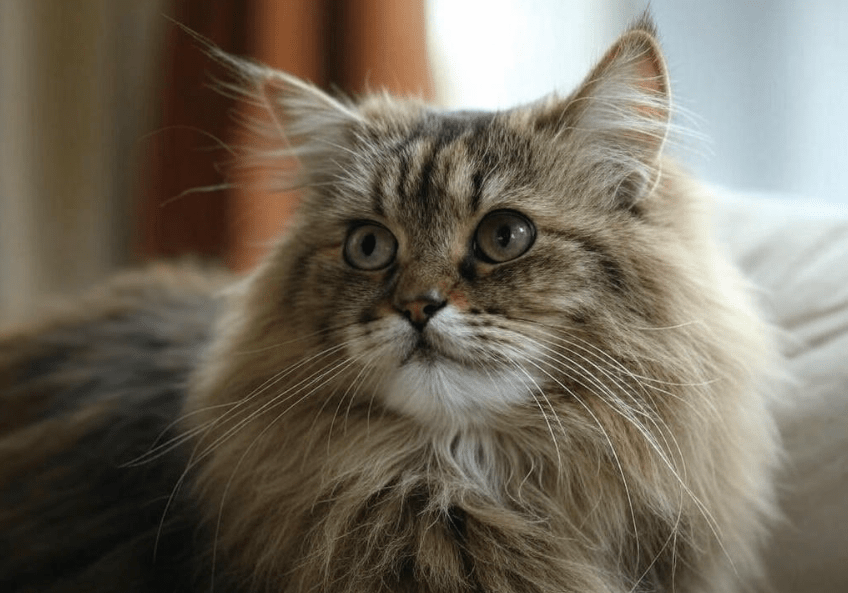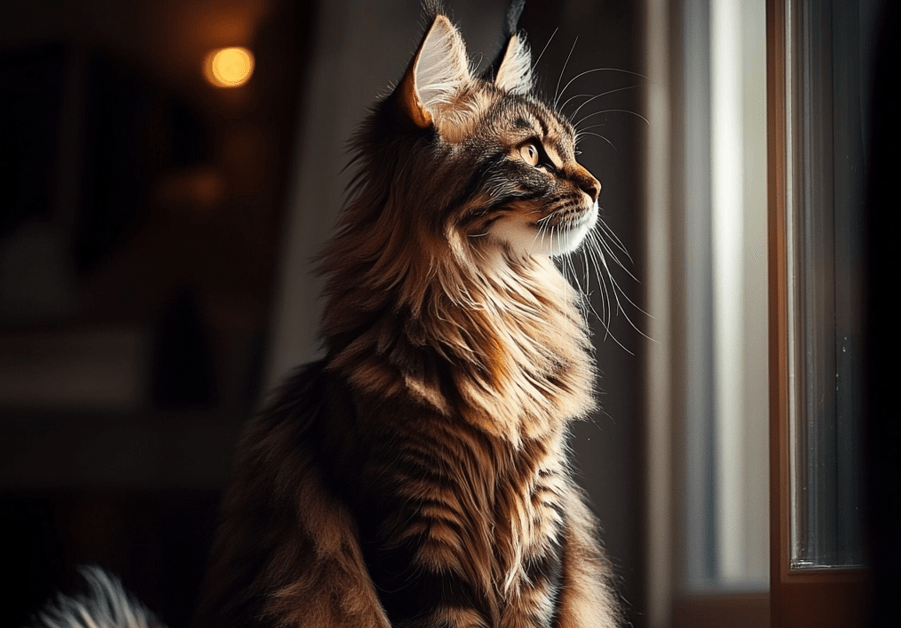
Maine Coon limping can be a distressing sight for any owner of this beloved, large, and affectionate breed. Known for their gentle temperament and tufted paws, Maine Coons are typically active and playful, so noticing your cat limping or favoring a leg raises immediate concern. Limping in Maine Coons can stem from various causes, ranging from minor injuries to serious health conditions. This comprehensive guide explores the common reasons behind Maine Coon limping, offering insights into symptoms, diagnosis, treatment, and prevention to help you ensure your feline friend stays healthy and mobile.
Understanding Maine Coon Limping
Limping, or lameness, in Maine Coons refers to an abnormal gait where the cat avoids putting weight on one or more legs. This can manifest as a slight hobble, reluctance to jump, or complete avoidance of using a limb. Maine Coons, due to their large size and active nature, may be prone to specific issues that cause limping. Identifying the underlying cause is crucial for effective treatment and preventing long-term complications.
Common Causes of Maine Coon Limping
Maine Coon limping can result from a variety of issues, ranging from temporary discomfort to chronic conditions. Below are the most common causes to check:
1. Injuries and Trauma
Maine Coons are adventurous and love to climb, jump, and explore, which can lead to injuries. Common trauma-related causes include:
Sprains or Strains: Overextension during play or a bad landing can strain muscles or ligaments, causing temporary limping.
Fractures: A fall or impact may result in a broken bone, leading to severe lameness.
Soft Tissue Injuries: Bruises or tears in muscles or tendons can cause pain and limping.
Foreign Objects: Thorns, splinters, or glass stuck in the paw pad can make walking painful.
Symptoms: Swelling, bruising, sensitivity to touch, or visible wounds. Action: Inspect the affected leg for cuts or foreign objects. If limping persists beyond 24 hours or worsens, consult a veterinarian for imaging (e.g., X-rays).
2. Joint Issues
Maine Coons are predisposed to joint-related conditions due to their large size and heavy bone structure. Common joint issues include:
Arthritis: Osteoarthritis, caused by wear and tear on joints, is common in older Maine Coons or those with a history of injuries.
Hip Dysplasia: A genetic condition where the hip joint doesn’t form properly, leading to pain and limping.
Luxating Patella: The kneecap slips out of place, causing intermittent limping or a “skipping” gait.
Symptoms: Stiffness after rest, reluctance to jump, or swelling around joints. Action: Veterinary evaluation, including X-rays or CT scans, can confirm joint issues. Treatment may involve pain management, supplements, or surgery in severe cases.
3. Paw Pad Problems
The paws of a Maine Coon are susceptible to issues that cause limping, especially since they spend significant time on their feet. Common paw-related causes include:
Cuts or Abrasions: Sharp surfaces or rough terrain can injure paw pads.
Infections: Bacterial or fungal infections, often from untreated wounds, can cause swelling and pain.
Burns or Frostbite: Exposure to hot surfaces or extreme cold can damage paw pads.
Symptoms: Licking or chewing at paws, redness, swelling, or discharge. Action: Clean the paw with antiseptic and monitor for improvement. Persistent issues require veterinary attention, possibly including antibiotics.
4. Nail Issues
Overgrown or damaged nails can lead to discomfort and limping in Maine Coons. Common problems include:
Overgrown Nails: Nails that curl into the paw pad cause pain and difficulty walking.
Torn or Broken Nails: Trauma can split or tear a nail, leading to bleeding and lameness.
Infections: Ingrown nails or untreated nail injuries may become infected.
Symptoms: Visible nail damage, bleeding, or excessive grooming of the paw. Action: Trim overgrown nails carefully or seek professional grooming. Veterinary care is needed for infections or severe nail damage.
5. Infections
Infections, whether localized or systemic, can cause Maine Coon limping. Common culprits include:
Abscesses: Bite wounds or scratches, common in multi-cat households, can develop into painful abscesses.
Septic Arthritis: Bacterial infection in a joint causes swelling, heat, and severe lameness.
Feline Calicivirus: This viral infection can cause joint inflammation and limping in some cases.
Symptoms: Fever, swelling, warmth in the affected area, or lethargy. Action: Immediate veterinary care is essential. Treatment may involve antibiotics, drainage of abscesses, or supportive care for viral infections.
6. Neurological Conditions
Neurological issues can affect a Maine Coon’s gait, leading to limping or weakness. Potential causes include:
Spinal Injuries: Trauma or disc disease can compress nerves, affecting leg movement.
Feline Hyperesthesia Syndrome: This condition may cause sensitivity and abnormal gait.
Seizures or Stroke: Rare but possible, these can lead to temporary or persistent lameness.
Symptoms: Weakness, dragging of limbs, or uncoordinated movements. Action: Neurological issues require urgent veterinary evaluation, often including MRI or CT scans.
7. Genetic or Congenital Conditions
Maine Coons may inherit conditions that contribute to limping, such as:
Polydactyly Complications: While extra toes are common in Maine Coons, abnormal toe structure can cause discomfort.
Osteochondrodysplasia: A rare bone growth disorder that may affect mobility.
Symptoms: Persistent limping from a young age or abnormal limb structure. Action: Genetic conditions require veterinary diagnosis and may involve lifelong management.
8. Systemic Health Issues
Underlying medical conditions can manifest as limping in Maine Coons. Examples include:
Diabetes: Neuropathy from uncontrolled diabetes can cause weakness or limping.
Cancer: Bone tumors or metastatic cancer may affect mobility.
Heart Disease: Hypertrophic cardiomyopathy (HCM), common in Maine Coons, can reduce blood flow, leading to weakness.
Symptoms: Weight loss, lethargy, or other systemic signs alongside limping. Action: Comprehensive veterinary workup, including blood tests and imaging, is necessary.
Diagnosing Maine Coon Limping
Pinpointing the cause of Maine Coon limping requires a thorough veterinary evaluation. The diagnostic process typically includes:
1. Physical Examination
Your veterinarian will assess your Maine Coon’s gait, palpate the limbs for pain or swelling, and check paws and nails for abnormalities.
2. History and Symptom Review
Providing details about when the limping started, its severity, and any recent incidents (e.g., falls or fights) helps narrow down causes.
3. Diagnostic Tests
Depending on the suspected cause, tests may include:
X-rays: To detect fractures, arthritis, or hip dysplasia.
Blood Tests: To identify infections, diabetes, or systemic issues.
Ultrasound or MRI: For soft tissue or neurological evaluation.
Joint Fluid Analysis: To diagnose septic arthritis or inflammation.
4. Observation and Monitoring
In mild cases, your vet may recommend rest and monitoring for a few days to see if limping resolves.
Treatment Options for Maine Coon Limping
Treatment depends on the underlying cause of limping. Below are common approaches:
1. Rest and Restricted Activity
For minor injuries like sprains, rest in a confined space (e.g., a crate or small room) promotes healing. Avoid letting your Maine Coon jump or climb during recovery.
2. Medications
Pain Relievers: Non-steroidal anti-inflammatory drugs (NSAIDs) like meloxicam reduce pain and inflammation.
Antibiotics: Used for infections or abscesses.
Steroids: May be prescribed for inflammatory or autoimmune conditions.
3. Surgery
Severe cases, such as fractures, hip dysplasia, or luxating patella, may require surgical intervention. Post-surgery, physical therapy or restricted movement aids recovery.
4. Joint Supplements
Glucosamine, chondroitin, or omega-3 fatty acids can support joint health, especially for arthritis or hip dysplasia.
5. Wound Care
For paw injuries or abscesses, cleaning, bandaging, and antibiotics promote healing.
6. Lifestyle Adjustments
Weight management is critical for Maine Coons with joint issues, as excess weight exacerbates limping. Provide a low-calorie diet if needed, and encourage gentle exercise.
7. Alternative Therapies
Acupuncture, laser therapy, or hydrotherapy may benefit Maine Coons with chronic conditions like arthritis.
Preventing Maine Coon Limping
While not all causes of limping are preventable, these strategies can reduce the risk:
Maintain a Healthy Weight: Obesity strains joints, so feed a balanced diet and monitor portions.
Provide Safe Environments: Minimize fall risks by securing high perches and removing hazards.
Regular Vet Checkups: Early detection of joint or systemic issues prevents complications.
Grooming and Nail Care: Trim nails regularly to avoid overgrowth or ingrown issues.
Exercise Moderation: Encourage play but avoid overly strenuous activities that could cause injuries.
When to Seek Veterinary Help
Contact your veterinarian immediately if your Maine Coon exhibits:
1.Persistent limping beyond 24–48 hours.
2.Severe lameness or inability to bear weight.
3.Swelling, heat, or open wounds.
4.Systemic symptoms like fever, lethargy, or appetite loss.
Prompt intervention can prevent minor issues from becoming serious and improve your cat’s quality of life.
Living with a Maine Coon Prone to Limping
If your Maine Coon has a chronic condition like arthritis or hip dysplasia, long-term management is key. Create a comfortable environment with:
1.Soft bedding to cushion joints.
2.Ramps or low perches to reduce jumping.
3.Regular, gentle play to maintain mobility without strain.
Stay proactive by monitoring for changes in gait or behavior and maintaining open communication with your veterinarian.
Conclusion
Maine Coon limping can stem from a wide range of causes, from minor paw injuries to complex joint or systemic conditions. By understanding the potential reasons, seeking timely veterinary care, and implementing appropriate treatments, you can help your Maine Coon regain mobility and comfort. Prevention, through weight management, safe environments, and regular checkups, plays a vital role in keeping your cat active and healthy. This guide aims to be the ultimate resource for addressing Maine Coon limping, empowering you to provide the best care for your feline companion.
For personalized advice, always consult a veterinarian to ensure your Maine Coon receives tailored treatment. With vigilance and care, your Maine Coon can continue to thrive, bringing joy with every playful pounce.




